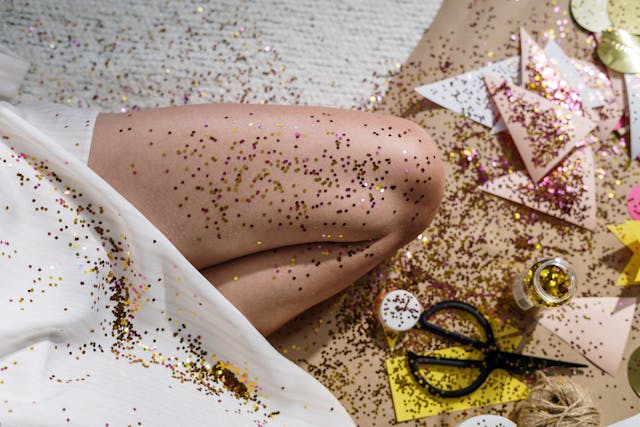Researchers at the Federal University of São Carlos in Brazil have discovered a concerning hazard associated with glitter: its harmful impact on aquatic ecosystems.
Glitter contributes to pollutions because of microplastics evading treatment
Glitter, a popular adornment found in clothing, cosmetics, and festive ornaments, is celebrated for its dazzling appearance. However, it poses a significant environmental concern. Classified as an emerging pollutant, glitter contributes to the microplastics that evade wastewater treatment, contaminating water bodies. This pollution harms aquatic organisms. Furthermore, a study by UFSCar reveals that glitter contains metals like aluminum, which obstruct sunlight underwater, hindering the growth of aquatic plants.
The study examined Egeria densa, a water plant native to South America, highlighting its importance in aquatic ecosystems. Macrophytes, such as E. densa, play vital roles by providing food, oxygen, shelter, and aiding in water purification projects. They are also favored in aquariums and artificial lakes for their aesthetic and oxygenating properties.
Researchers conducted laboratory experiments to investigate how glitter affects E. densa. They immersed the plants in water containing glitter and observed their photosynthesis rates in different conditions: with and without glitter, and with and without light. The results revealed that photosynthesis rates were 1.54 times higher in the absence of glitter. Glitter reduced light availability in the water, impacting the plants’ ability to respire and photosynthesize.
Glitter hinders photosynthesis in aquatic plants
First study author and a graduate student in ecology and natural resources at UFSCa Luana Lume Yoshida said that the results support T initial hypothesis suggesting that glitter hinders photosynthesis, potentially due to the reflective properties of microplastic particles’ metallic surfaces.
The research underscores the ecological ramifications of glitter contamination. Besides directly impeding certain aquatic organisms, it also induces wider ecological disturbances and impacts the food web.
Marcela Bianchessi da Cunha-Santino, the principal investigator at UFSCar’s Department of Hydrobiology, said that the experiment focused on studying the impact of glitter on a species of macrophyte. However, previous scientific research has extensively documented water contamination and the ingestion of such particles by various aquatic organisms.


